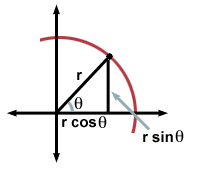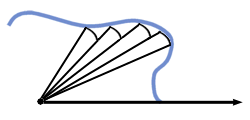Please wait while we process your payment
If you don't see it, please check your spam folder. Sometimes it can end up there.
If you don't see it, please check your spam folder. Sometimes it can end up there.
Please wait while we process your payment

By signing up you agree to our terms and privacy policy.
Don’t have an account? Subscribe now
Create Your Account
Sign up for your FREE 7-day trial
By signing up you agree to our terms and privacy policy.
Already have an account? Log in
Your Email
Choose Your Plan
Individual
Group Discount
Save over 50% with a SparkNotes PLUS Annual Plan!
 payment page
payment page
Purchasing SparkNotes PLUS for a group?
Get Annual Plans at a discount when you buy 2 or more!
Price
$24.99 $18.74 /subscription + tax
Subtotal $37.48 + tax
Save 25% on 2-49 accounts
Save 30% on 50-99 accounts
Want 100 or more? Contact us for a customized plan.
 payment page
payment page
Your Plan
Payment Details
Payment Summary
SparkNotes Plus
You'll be billed after your free trial ends.
7-Day Free Trial
Not Applicable
Renews April 7, 2025 March 31, 2025
Discounts (applied to next billing)
DUE NOW
US $0.00
SNPLUSROCKS20 | 20% Discount
This is not a valid promo code.
Discount Code (one code per order)
SparkNotes PLUS Annual Plan - Group Discount
Qty: 00
SparkNotes Plus subscription is $4.99/month or $24.99/year as selected above. The free trial period is the first 7 days of your subscription. TO CANCEL YOUR SUBSCRIPTION AND AVOID BEING CHARGED, YOU MUST CANCEL BEFORE THE END OF THE FREE TRIAL PERIOD. You may cancel your subscription on your Subscription and Billing page or contact Customer Support at custserv@bn.com. Your subscription will continue automatically once the free trial period is over. Free trial is available to new customers only.
Choose Your Plan
This site is protected by reCAPTCHA and the Google Privacy Policy and Terms of Service apply.
For the next 7 days, you'll have access to awesome PLUS stuff like AP English test prep, No Fear Shakespeare translations and audio, a note-taking tool, personalized dashboard, & much more!
You’ve successfully purchased a group discount. Your group members can use the joining link below to redeem their group membership. You'll also receive an email with the link.
Members will be prompted to log in or create an account to redeem their group membership.
Thanks for creating a SparkNotes account! Continue to start your free trial.
We're sorry, we could not create your account. SparkNotes PLUS is not available in your country. See what countries we’re in.
There was an error creating your account. Please check your payment details and try again.
Please wait while we process your payment

Your PLUS subscription has expired
Please wait while we process your payment
Please wait while we process your payment

The Area Below a Polar Curve
Polar coordinates provide an alternate way of specifying a point in the plane. The polar coordinates [r, θ] represent the point at a distance r from the origin, rotated θ radians counterclockwise from the positive x-axis. Since r represents a distance, it is typically positive. Sometimes, r is allowed to be negative; in this case [r, θ] represents the reflection about the origin of the point [| r|, θ].
It follows from basic trigonometry that the point with polar coordinates [r, θ] has Cartesian coordinates
| (r cosθ, r sinθ) |

Going the other direction, the point with Cartesian coordinates (x, y) has polar coordinates
  , tan-1 , tan-1    |
if it lies in quadrants I or IV and polar coordinates
  , tan-1 , tan-1   + Π + Π |
if it lies in quadrants II or III.
A polar function r(θ) has a graph consisting of the points [r(θ), θ]. Such a graph is known as a polar curve. One of the simplest polar curves is the circle, the graph of the polar function r(θ) = c, for some constant c. In the remainder of this section, we investigate how to find the area enclosed by a polar curve from one value of θ to another. For example, we might wish to find the area of the region below the curve r(θ) = 1 from θ = 0 to θ = Π/2 (this region is of course a quarter of the interior of a unit circle).
Considering the general case, the idea is similar to the idea for finding the area below the graph of a function in Cartesian coordinates. In that case, we approximated the region by a bunch of thin rectangles; here, we approximate it by thin circular sectors (shaped like slices of pie).

Such a method worked before because we knew beforehand how to compute the area of a rectangle. Now we attempt this computation for a circular sector. Suppose the sector has angular width of Δθ and is part of a circle of radius r, with area Πr2. Since the sector accounts for Δθ/2Π of the area of the circle, the area of the sector is equal to
 Πr2 = Πr2 =  (Δθ)r2 (Δθ)r2 |
Summing together the areas of all the thin sectors and taking the limit as Δθ→ 0 (and the number of sectors approaches infinity), we get the definite integral
  r(θ)2dθ r(θ)2dθ |
Note that, because of the square in the expression being integrated, the integral counts all area as positive, even when r(θ) < 0.
Applying this theory to the example given above, we get an area of
  (1)2dθ = (1)2dθ =   θ θ = =  |
which is indeed one quarter of the area of a unit circle.
Please wait while we process your payment

